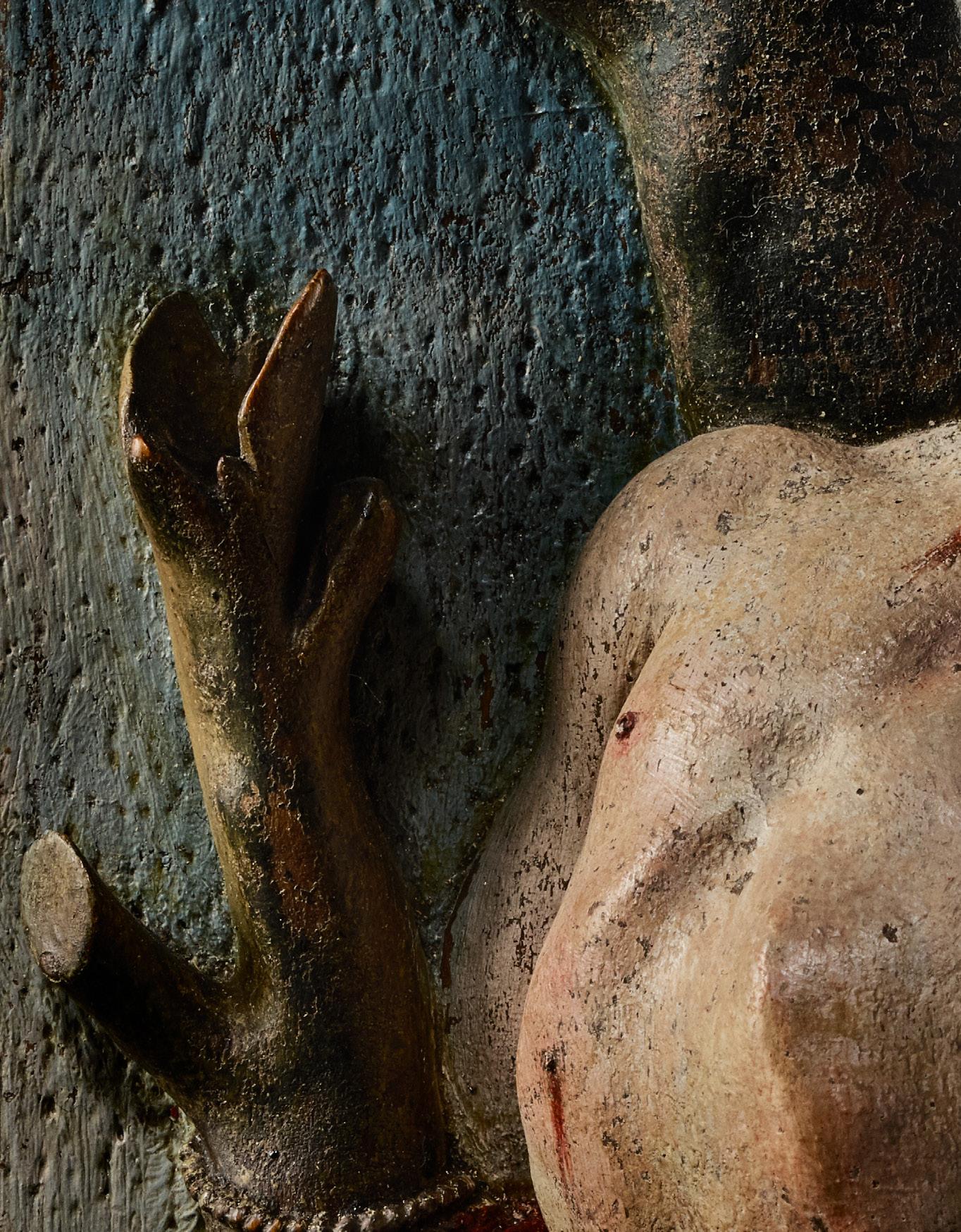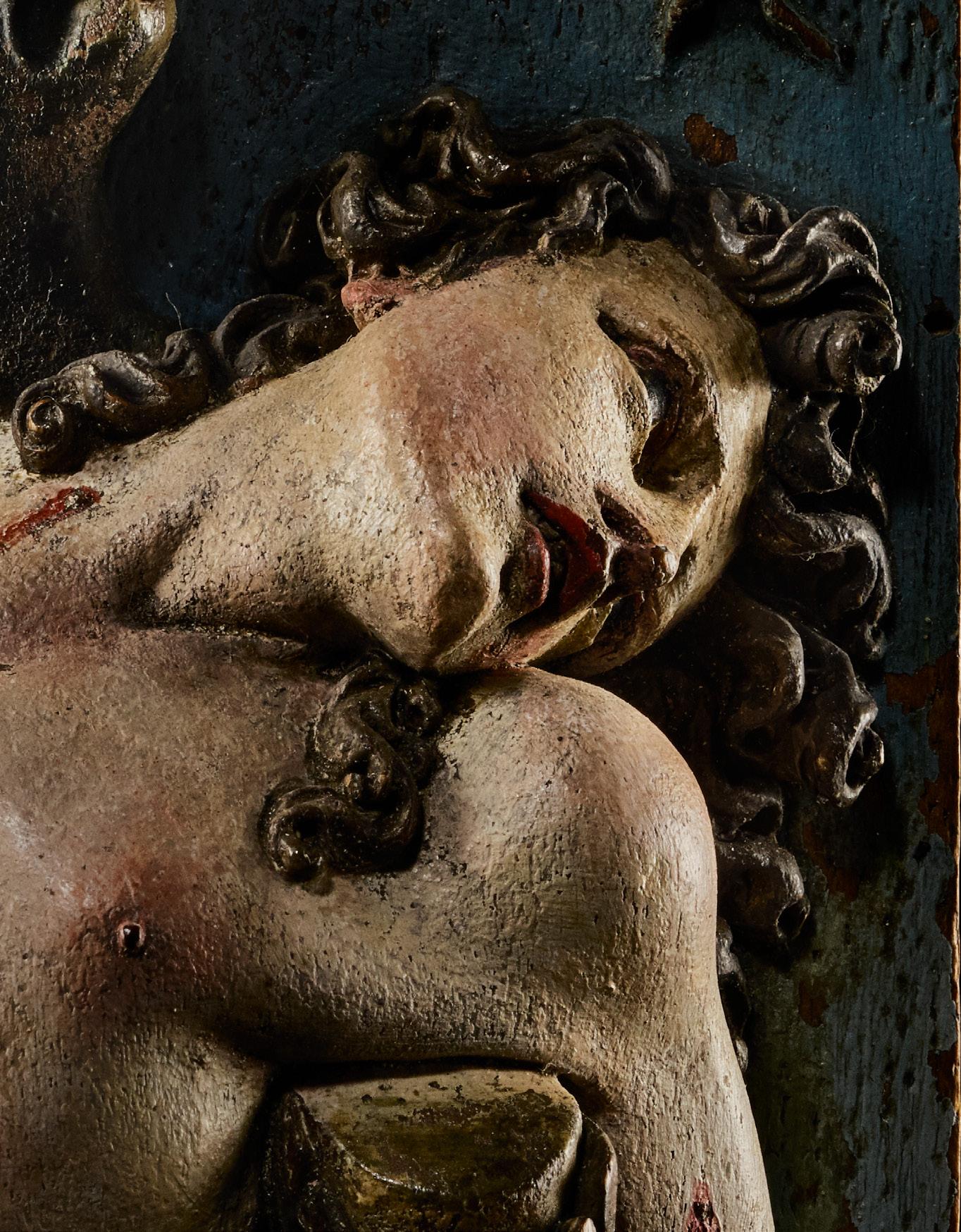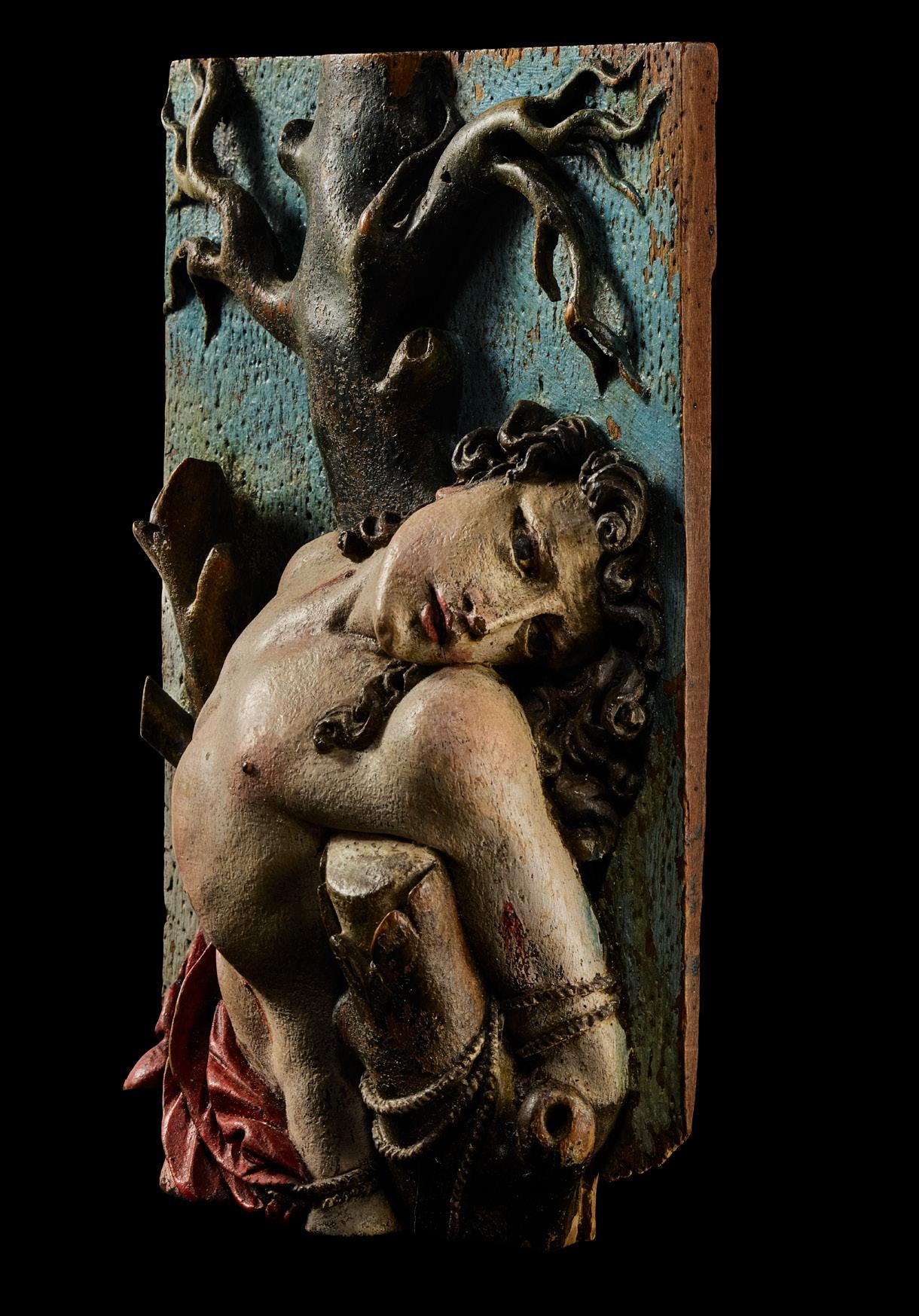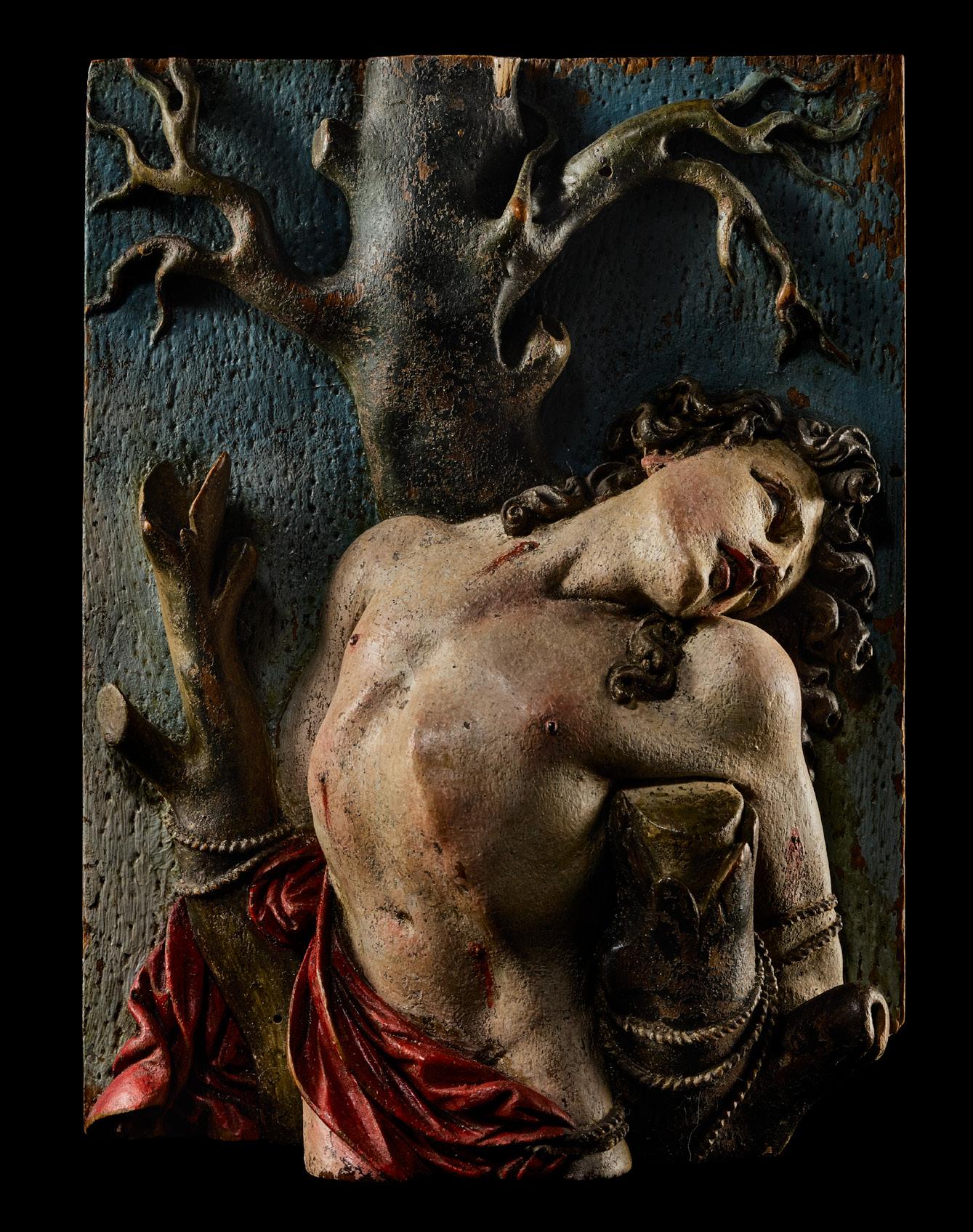
2 minute read
23 Relief of Saint Sebastian, attributed to Christoph Daniel Schenck
23
Advertisement

Christoph Daniel Schenck Konstanz, 1633 – 1691, attributed to
Circa 1680
Fruitwood relief with the original polychromy Height: 15.5 cm, width: 11.3 cm
Provenance:
Private collection, South Germany
Related Literature:
Christoph Daniel Schenck 1633 – 1691, exh. cat., Sigmaringen 1996
23
St Sebastian, in extreme pain, is bound with his back to a tree; both arms are pulled backwards and are tied to the stumps of branches with ropes. The position of his arms forces the saint, shown only as a half-length figure, to twist his naked torso which is covered with bleeding arrow wounds. His head leans to the side and back; his eyes look heavenwards. In addition to the martyrdom, conveyed through the saint’s expressive features, Schenck accentuates the young man’s youthful beauty through the head of curls and the red lips.
Among the works definitively attributed to Christoph Daniel Schenck there are several depictions of St Sebastian. The most important is doubtlessly the so-called ‘Stuttgart Sebastian statuette’. The ivory figure is signed by the artist and dated – the blackened engraving on the stone at the saint’s feet reads: C.D. Schenck / inv et sculpt. / 19. Nov. Anno 1675 / Constantiae. The masterly execution of pathos, the expression of suffering borrowed from Laocoön and the full head of hair are striking. Behind this is the artist’s intention to shock the pious viewer to the core when faced with the tormented martyr in his role as the imitatio Christi. To move believers emotionanally and lead them to the ‘true faith’ of the Catholic Church, was an artistic concept of the Counter-Reformation used to great effect.
Compared to the so-called ‘Stuttgart Sebastian statuette’ of Sebastian mentioned above, our relief is probably created later. Schenck makes use of the stylistic motifs available with masterly confidence: the martyr’s tree, suggesting a landscape, is set against a blue background covered with punchmarks1 that simultaneously creates a spatial architecture for the pictorial surface. The head, dramatically stretched backwards, is modelled once again on the figure of Laocoön, to which Fritz Fischer and Andrea Tietze refer in their catalogue of works on Christoph Daniel Schenck.2 The motif here, however, is artistically further refined.
1 Punchmarks are typical of many of Schenck’s works (cf. The Penitent St Peter, 1689, St. Stephen’s Benedictine Abbey, Augsburg) 2 Cf. Christoph Daniel Schenck 1633 – 1691, Rosgartenmuseum Konstanz, p. 116

C. D. Schenck: St Sebastian, signed and dated 1675, Stuttgart, Württembergisches Landesmuseum, inv. no. 1954 – 366
Laocoön Group, detail, Roman marble copy based on Greek prototype, 1st century BC or AD, Vatican Museums
Get Out
„As the figure is relatively small, it was made for private devotional use and would have been placed on a house altar.“
Florian Eitle-Böhler
23






